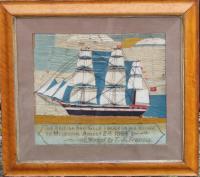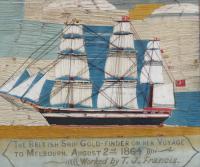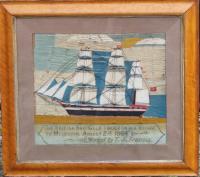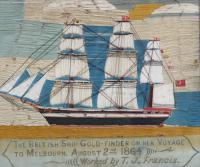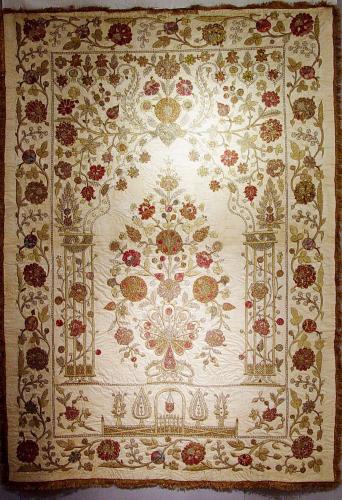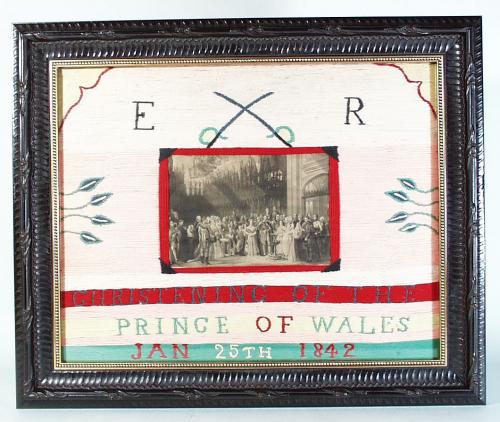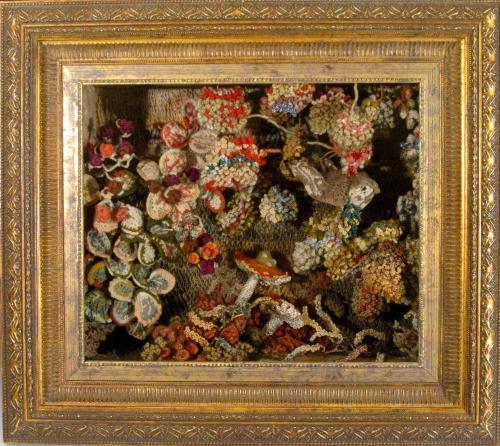
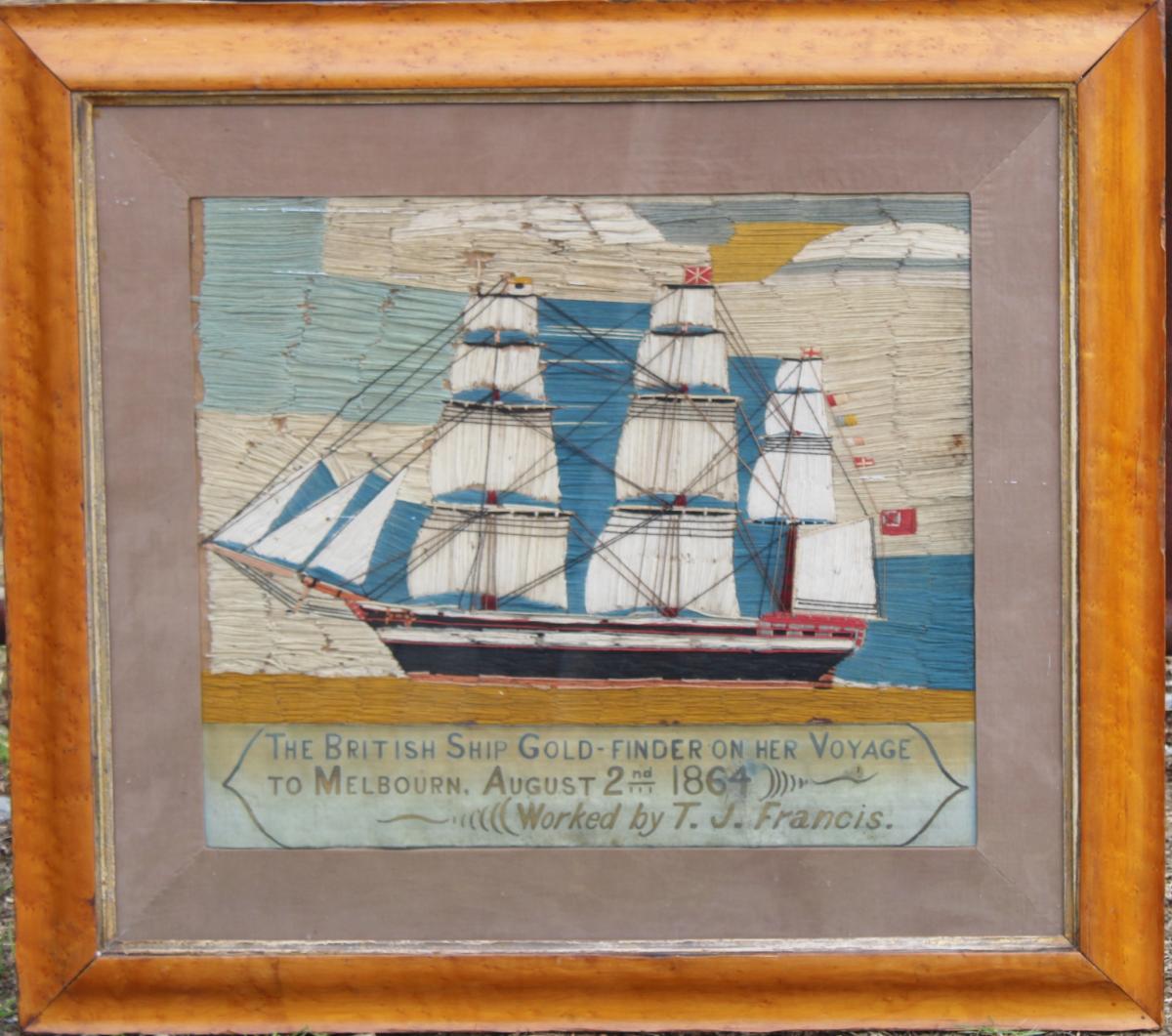
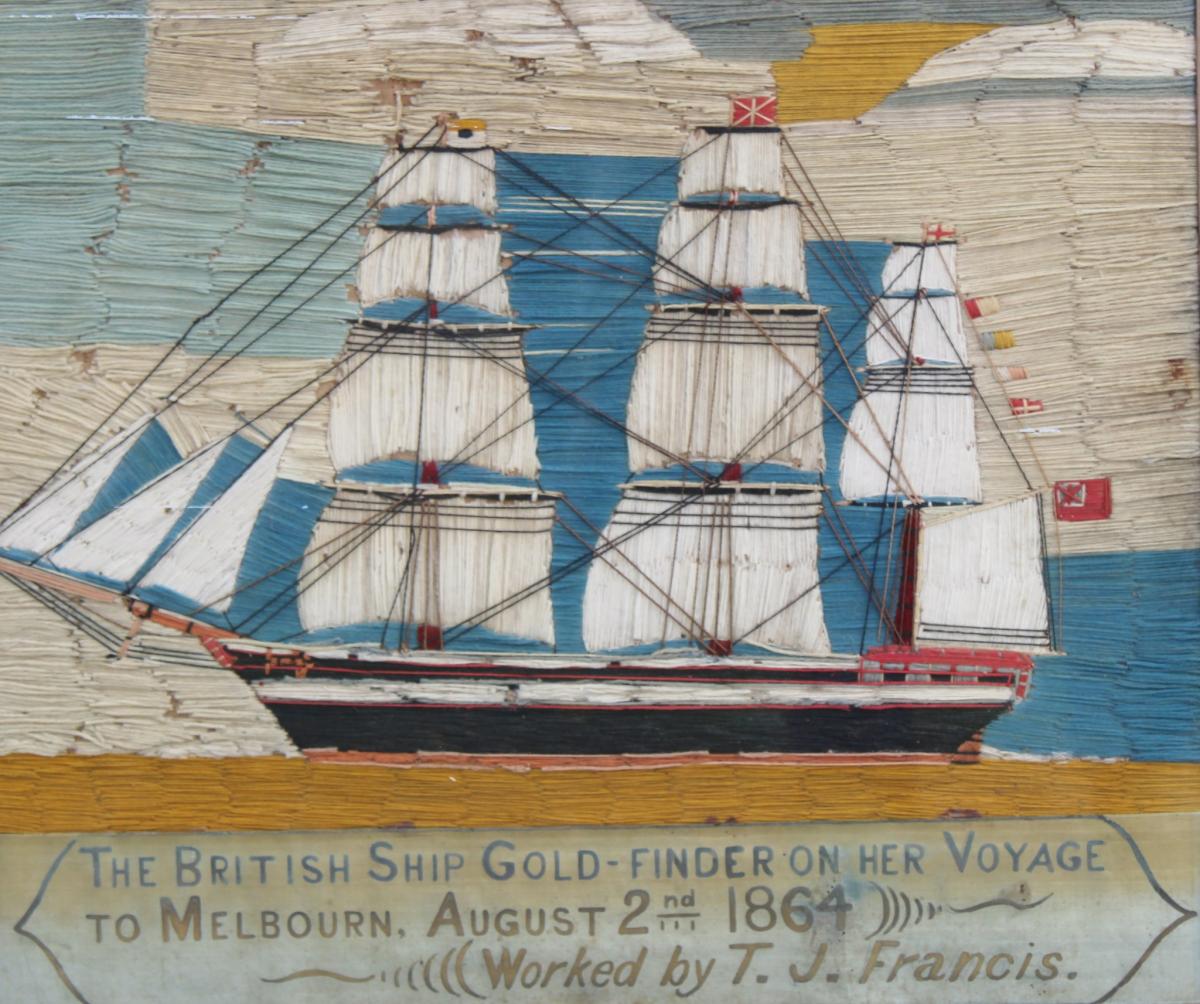
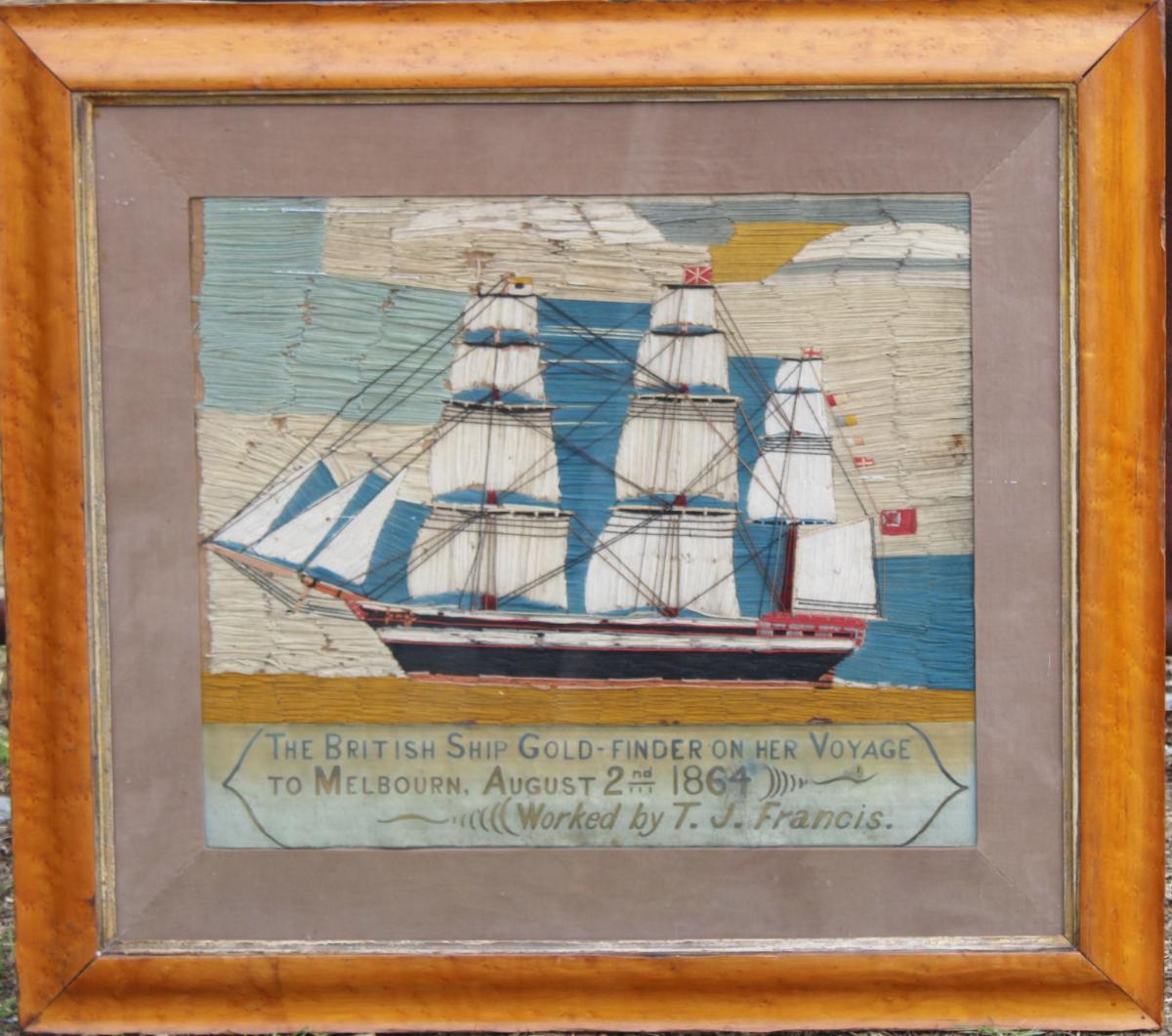
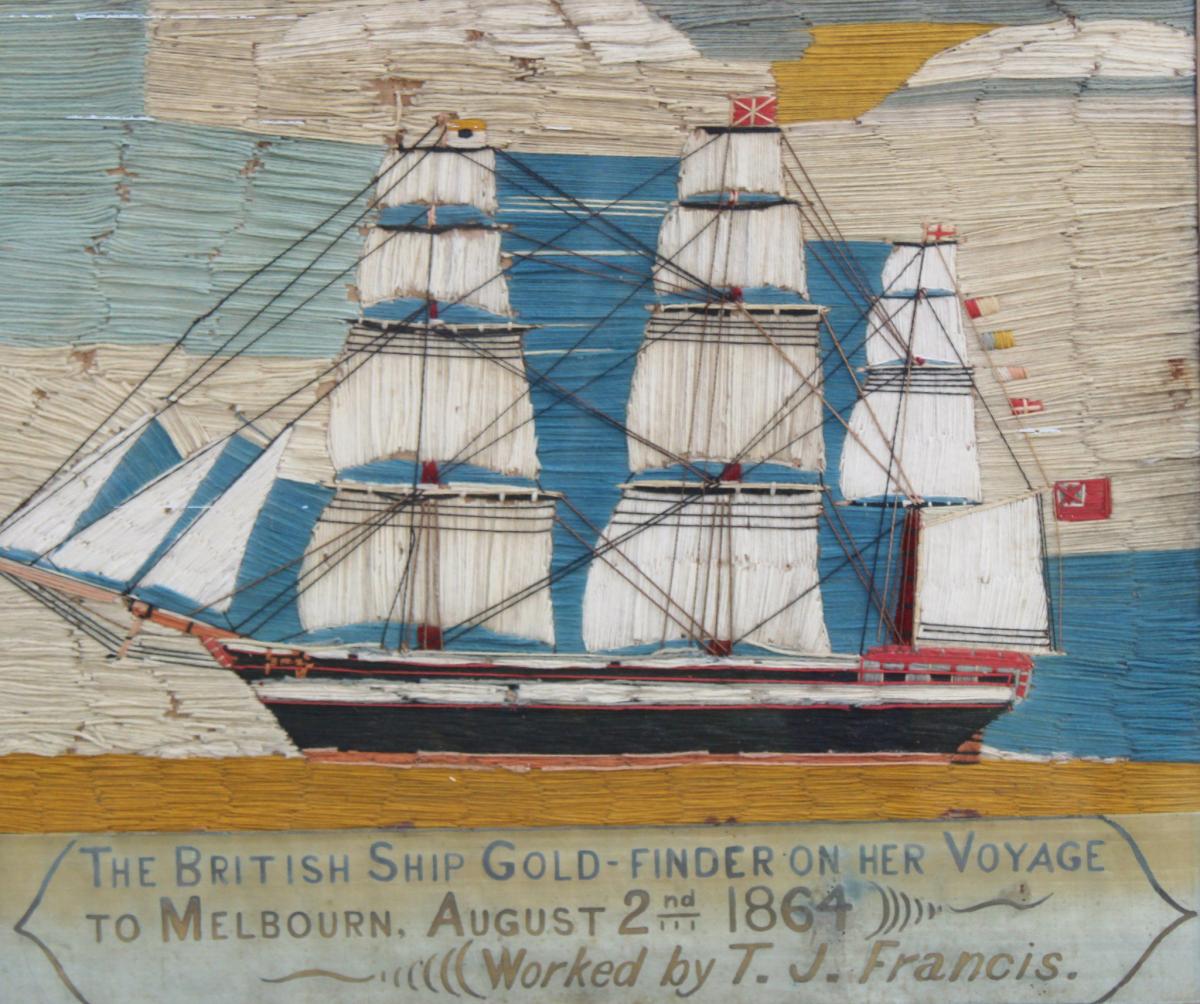
Price
£4500.00This object is eligible for a Certificate of BADA Provenance
The BADA Standard
- Since 1918, BADA has been the leading association for the antiques and fine art trade
- Members are elected for their knowledge, integrity and quality of stock
- Our clients are protected by BADA’s code of conduct
- Our dealers’ membership is reviewed and renewed annually
- Bada.org is a non-profit site: clients deal directly with members and they pay no hidden fees
Sailor's Woolwork Nautical Woolwork Picture, Inscribed:The British Ship Gold Finder on her voyage to Melbourn, August 2, 1864. Worked by T.J. Francis,
Circa 1864
This sailor's woolwork depicts a portside view of the the Gold Finder. The Gold Finder was a 3-masted iron ship built in 1863 by J. Laing of Sunderland. There is a detailed inscription below including the maker's name- T.J. Francis.
A notice in the Liverpool Mercury on Tuesday May 3, 1853......This ship is expected to sail very fast, has all her passenger arrangements on a novel and peculiar plan, affording an amount of light and ventilation such as no other passenger ship ever possessed. The ships bell has recently been acquired by the Merseyside Maritime Museum. It seems though that the ship's description involved a degree of hyperbole as she was in fact laid down as a coal ship and converted to passenger accommodation later to meet the demand for the Gold Rush in Australia.
Dimensions: Framed: 28 3/10 inches high x 31 inches wide (72cm x 79 cm).
The Australian gold rush started after Edward Hargraves found the precious metal in New South Wales in 1851. He was not the first to discover gold but is credited with launching the stampede when thousands tried their luck at unearthing wealth - and some succeeded. Hargraves (1816-1891), a former hotelier and cattle farmer, played a small part in the California gold rush of 1849. He didn't get rich but met people who knew about gold and where it could be found - they pointed out similarities between California and New South Wales. Hargraves headed back to Australia to test these theories and stake a claim for a Government reward for the discovery of viable gold fields. Despite initial setbacks, he organised fellow prospectors in the quest for gold which was successful. Hargraves was granted massive rewards of more than pounds 12,000 and later a pension of pounds 250 a year.
He was born in Gosport, Hampshire, the son of an army officer, and educated at Lewes and Brighton Grammar School. Hargraves joined the merchant navy before arriving at Sydney in 1832 and marrying Eliza Mackie four years later.
Publicity about the gold rush prompted many migrants to sail from Liverpool to seek their fortunes - the first licence was issued in Victoria on 21 September 1851. Australia's population boomed as the emigrants poured in and the gold rush created an increased demand for large clippers like the Canada-built Gold Finder.
(Ref: NY10224-ikrr)
Stock number
NY10224-ikrrThe BADA Standard
- Since 1918, BADA has been the leading association for the antiques and fine art trade
- Members are elected for their knowledge, integrity and quality of stock
- Our clients are protected by BADA’s code of conduct
- Our dealers’ membership is reviewed and renewed annually
- Bada.org is a non-profit site: clients deal directly with members and they pay no hidden fees


